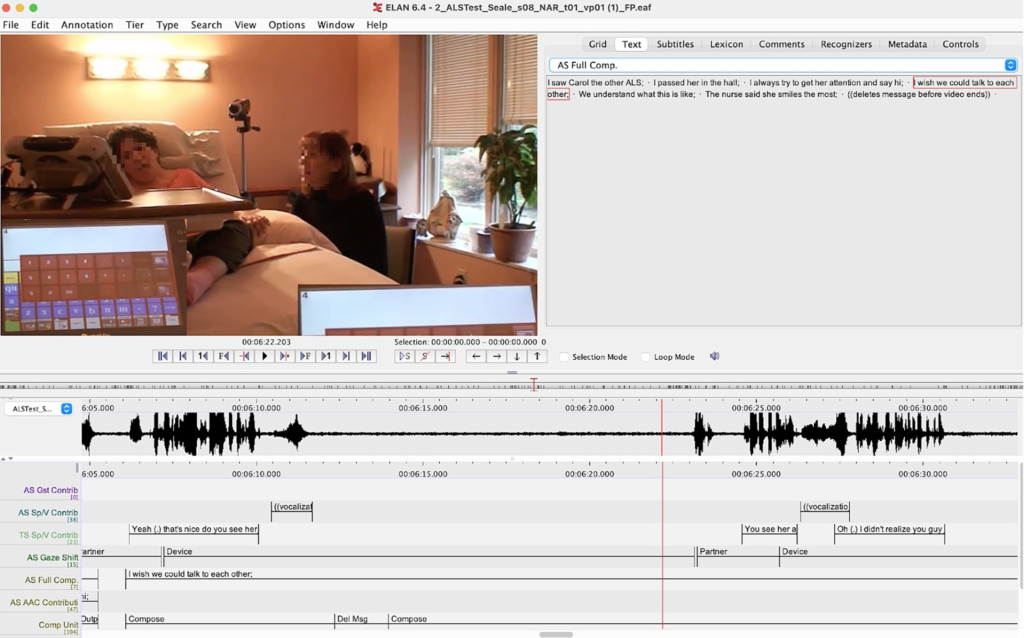To design more conversant augmentative and alternative communication (AAC) devices, we first need to develop a better understanding of the problems complex communication needs (CCN) speakers face in their everyday life. To do that, Project Converse aims to translate insight from socio-interactional research into usable knowledge to inform future AAC technologies.
In Project Converse, we approach communication from an interactional and pragmatic perspective which sees language as the central resource that speakers use to perform actions in interaction. It is through language and embodied conduct that we can ask for salt while sitting around a dinner table, coordinate complex procedures in the operating room, or communicate with a friend in an AAC context. Rather than just a set of formal features stored in our brain, language provides speakers with flexible and collaborative resources that sit at the core of human sociality and enable it.
Project Converse is primarily inspired by the work conducted over the past fifty years within Ethnomethodology and Conversation Analysis (EMCA) and – more recently – Interactional Linguistics (IL). EMCA/IL is an observational approach that offers a powerful set of methods and procedures to explore language use and nonverbal communication in social interaction. We are particularly interested in exploring the evergrowing body of research concerned with different interactional strategies that participants employ to solve different kinds of communicative problems.
As EMCA/IL analysts, we collect audio and video recordings and, after repeated viewings, transcribe sequences of interaction to capture the minute details of language in interaction, including non-linguistic aspects, such as timing, nonverbal behavior, and the use of artefacts. Detailed multimodal transcriptions allow us to ground our analyses in the empirical details of the interactions observed while also making the data available for further inspection by other researchers and the wider community.

Through conversation analytic procedures, we aim to develop a participant-relevant perspective on the interactions observed. To do that, we base our observations on the visible aspects of interaction and refrain from imputing cognitive states – such as intentions, psychological states, emotions, etc – to participants’ behavior. Our analyses rely only on what is actually available to interactants and on what speakers visibly orient to as relevant in that particular interaction.
